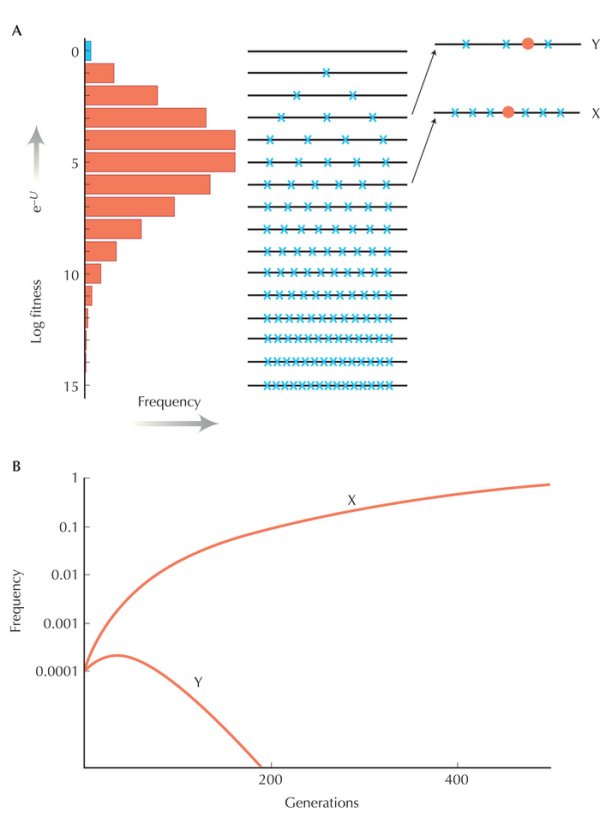

Figure WN23.9. In an asexual population, deleterious mutations hitchhike to fixation along with favorable mutations. (A) In a balance between mutation and selection, most genomes may carry several deleterious mutations (crosses), and the average fitness of the population is e–U. A beneficial mutation (circle) that arises in a genome with an average number of deleterious mutations (lower genome at right, X) will have an initial advantage but, as it accumulates additional mutations, may eventually be eliminated (B). A beneficial mutation only has a chance of fixing in the population if its overall fitness, including the load of deleterious mutations it starts out with, is higher than the fittest class (e.g., Y). However, it will then carry deleterious mutations to fixation (in example Y, three are fixed).
| © 2007-2010 by Cold Spring Harbor Laboratory Press. All rights reserved. |
| The reproduction, modification, storage in a retrieval system, or retransmission, in any form or by any means, electronic, mechanical, or otherwise, for reasons other than personal, noncommercial use is strictly prohibited without prior written permission. You are authorized to download one copy of the material on this Web site for personal, noncommercial use only. The material made available on this Web site is protected by United States copyright laws and is provided solely for the use of instructors in teaching their courses and assessing student learning. Dissemination or sale of any of this material, as a whole or in parts (including on the World Wide Web), is not permitted. All users of these materials and visitors to this Web site are expected to abide by these restrictions. Requests for permission for other uses of this material should be directed to Cold Spring Harbor Laboratory Press, 1 Bungtown Road, Cold Spring Harbor, NY 11724 or submitted via our World Wide Web Site at http://www.cshlpress.com/. |